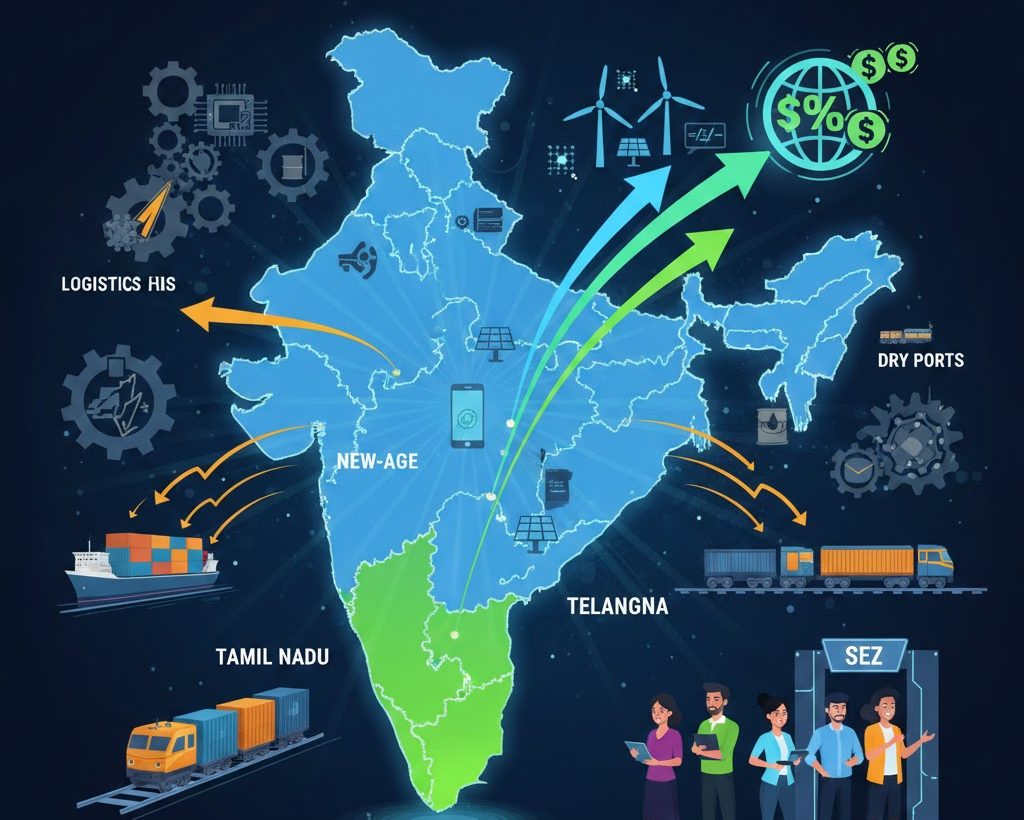5G Spectrum Auction in 37-40 GHz Band
Context:
The Telecom Regulatory Authority of India (TRAI) has approved the auction of 5G spectrum in the 37-40 GHz band, paving the way for enhanced high-speed connectivity, particularly in densely populated urban areas.
Key Highlights of TRAI’s Proposal
- Auction of ₹17,940 crore worth of 5G spectrum across all 22 telecom circles.
- The millimeter wave spectrum is crucial for boosting capacity in high-density areas.
- 3,000 MHz spectrum per circle available in the 37-40 GHz band.
- TRAI has recommended that the Department of Telecommunications (DoT) auction the spectrum with a validity of 20 years.
- Participation is open to mobile operators, Category ‘A’ and ‘B’ Internet Service Providers (ISPs), and Machine-to-Machine (M2M) service providers under a unified license.
- The 37-37.5 GHz band is designated for broadband mobile use, while the 37.5-40 GHz and 40-42.5 GHz bands support mobile and satellite gateway link applications.
- Spectrum cap set at 40% of total spectrum in the auction, with 100 MHz block size for bidding.
About 5G
5G is the fifth generation of cellular wireless technology, offering enhanced speed, reduced latency, and greater flexibility compared to its predecessors like 4G.
Key Features and Benefits:
- Speed: Theoretical peak speeds can reach 20 Gbps, compared to 4G’s 1 Gbps. Real-world download speeds average around 432 Mbps.
- Latency: 5G dramatically reduces latency, the delay in data transmission. 5G networks can achieve latencies as low as 1 millisecond, compared to the 20-70 milliseconds of 4G.
- Capacity: It aims to support 1,000 times higher mobile data volume per area and 100 times the number of connected devices compared to 4G LTE.
- Efficiency: 5G networks are designed to be more energy-efficient, with the goal of reducing network energy usage by 90% and enabling up to 10-year battery life for low-power IoT devices.
- Reliability: 5G improves network reliability through technologies like adaptive Modulation and Coding Scheme (MCS), which lowers the Block Error Rate (BER).
How 5G Works:
- Radio Frequencies: 5G utilises a wider range of radio frequency bands, including sub-6 GHz and mmWave (millimeter wave). mmWave, operating at frequencies between 30 and 300 GHz, provides massive bandwidth for superfast speeds.
- Advanced Antenna Systems: 5G employs MIMO (multiple input, multiple output) antenna technology, enabling simultaneous connections through multiple antennas to increase capacity and density.
- Small Cell Networks: 5G relies on small cell networks, compact base stations placed on light poles and rooftops, to provide localized capacity boosts.
- Network Architecture: 5G networks are virtualised and software-driven, exploiting cloud technologies to deliver connected experiences.
Significance of TRAI’s Recommendations
- TRAI, as the sectoral regulator, plays a key role in guiding the DoT’s spectrum auction process.
- The reserve price and auction modalities are finalised based on stakeholder feedback and market analysis.
- The 37-40 GHz band has device ecosystem support, making it viable for auction.
Timeline for the Next Spectrum Auction
- The government has not yet decided on the date for the next auction.
- The demand for additional spectrum is under evaluation based on telecom operators’ requirements.
- Despite the 2021 Cabinet decision to hold annual spectrum auctions, the 2022 5G auction saw record purchases worth ₹1.5 lakh crore, reducing immediate demand.
- The 2024 spectrum auction saw low participation, with only 1.3% of total available radio frequencies sold, amounting to 141.4 MHz of spectrum for ₹11,340 crore—the lowest since 2010.
With the approval for 5G spectrum auction in the 37-40 GHz band, India moves closer to expanding high-speed mobile connectivity in urban areas. However, uncertainties remain regarding telcos’ demand, government auction timelines, and financial feasibility. As the digital landscape evolves, the efficient allocation of spectrum will play a crucial role in shaping India’s 5G future.


